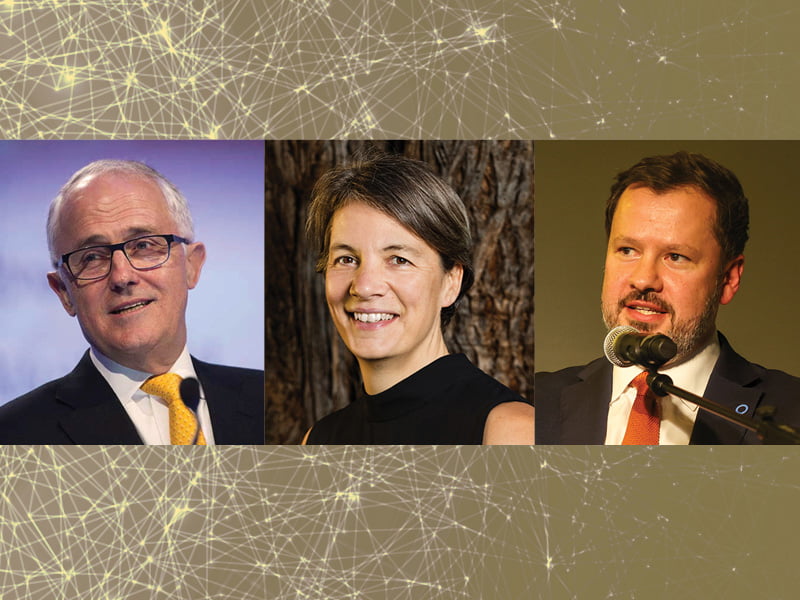Newly installed Industry and Science minister Ed Husic has a point to make about the co-investment model that brings government, business and institutional research together to solve challenges and build successful Australian companies.
It was not lost on anyone who attended Silicon Quantum Computing’s stunning breakthrough announcement at the University of NSW in Sydney on Thursday. At the event, Mr Husic recognised – and even congratulated – former Liberal Prime Minister Malcolm Turnbull and former Industry minister Christopher Pyne for leading the Commonwealth’s early co-investment in the company.
It was this early, substantial and long-term co-investment in SQC from the federal government, the NSW government, and the business that has been key to the company reaching this key technical milestone.
Silicon Quantum Computing was set up in 2017 to pursue the commercial opportunities presented by physicist Michelle Simmons pioneering work. The company was set up with $83 million in capital funding from the Commonwealth, the NSW state government, Telstra, and the Commonwealth Bank as equity partners.

This co-investment was made on the back of structures and permissions put in place through the 2015 National Innovation and Science Agenda. Remember the Ideas Boom?
And this is the point that Ed Husic was making. The co-investment by government and business into SQC came at a time when such behaviour by governments was considered taboo. And yet it came at a critical moment in the evolution of the technology and helped to underwrite its success.
As the new Minister for Industry and Science, Ed Husic is signaling this model as a structure the Albanese government will encourage. He used the Turnbull government investment in SQC to illustrate a model for future government co-investments in the commercialisation of Australian research.
Ed Husic was shadow Innovation minister during the roll-out of the National Innovation and Science Agenda, a landmark set of policies of which then-Assistant Minister for Innovation Wyatt Roy was a key driver. And while the NISA lost momentum, that co-investment model was clearly not lost on him.
The $15 billion National Reconstruction Fund that Labor took to the election is the engine room for that co-investment strategy, and in relation to deep tech the $1 billion Critical Technologies Fund will provide the financial platform for co-investment in strategic technology ranging from quantum computing, artificial intelligence, robotics and software.
The industry is keen to understand in more detail how the National Reconstruction Fund and its targeted subsets will work. But to listen to Mr Husic at the UNSW yesterday, it is clear that a substantial portion of the fund would be earmarked for substantial equity co-investment.
Congratulating Malcolm Turnbull and the co-investment model that led to SQC’s breathrough, Mr Husic said Labor would go bigger.
“Governments and business need to do more of this at scale. It’s very important [and] I also want to recognise that in what’s happened here today,” Mr Husic said.
“SQC was founded to commercialise valuable IP here in Australia, and five years later, we are listening to today’s announcement,” he said.
“The company was established with co-investment by government, both the Commonwealth and New South Wales government, and industry.”
So, there you have it. More co-investments by government and business in technology ventures like SQC and done at scale.
If that doesn’t get the industry excited, then seriously, what’s even the point of electing a new government.
From people who attended at the Silicon Quantum event at UNSW on Thursday, the levels of excitement and optimism brought back the 2015 Turnbull/NISA ‘feels.’
The celebrated professor at the centre of the SQC breakthrough clearly thought so. The last word goes to her:
“One of the things I have learned in life is that it’s really terrific to have people get behind you, because then you feel like you can change the world,” Professor Simmons told InnovationAus.com.
“Obviously Minister Husic today really showed us that [support]. And the last time I really felt like that was with Malcolm Turnbull. He understood what we were doing and got right behind it,” she said.
“And honestly we wouldn’t be where we are today without his support.”
Do you know more? Contact James Riley via Email.


Well done Ed Husic for recognising previous smart government initiatives albeit from the opposition. Interesting to see Malcolm Turnbull’s initiatives are being appreciated more as people catch up with them.